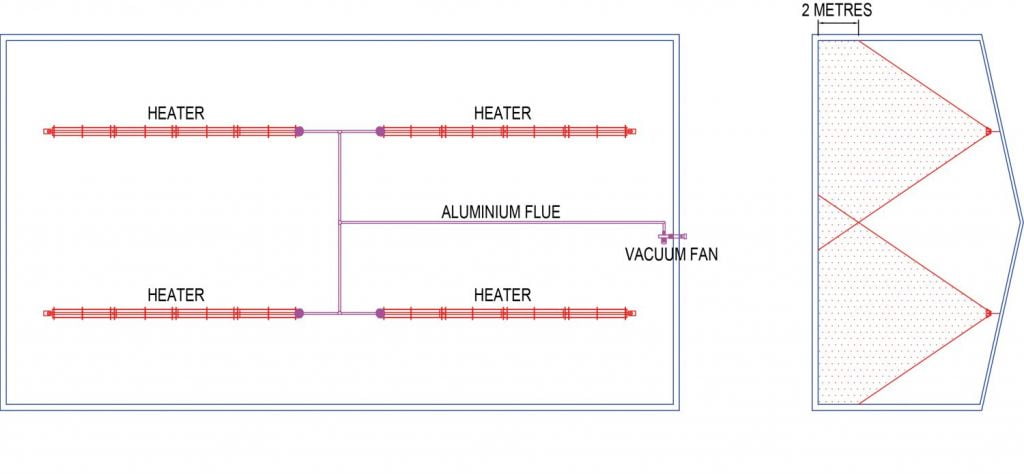This blog is intended to give an overview of the simplified fundamentals of overhead radiant tube heating system design.
The first step is to understand the design criteria the system is to perform to, as given by the specification or the client/end user. Typically for an industrial facility the design criteria might be as follows:
The calculation of the theoretical heat loss can then be undertaken. There are various models around all of which give very similar results. The models have to take into account the type of heating selected whether it is radiant or warm air.
From the resultant of the theoretical heat loss calculation, an assessment of the required radiant system capacity can be undertaken. It must be realised that the radiant system capacity has to be such that a meaningful radiant coverage of the required floor area of the facility can be achieved. The radiant output of the proposed equipment and hence the system output will nearly always be in excess of the theoretical loss.
The theoretical heat loss calculations are based on steady-state conditions and can in reality only be a guide to the estimated running costs, as the actual situation will be in a dynamic state and the running costs will be dependent both on the way in which the facility is managed along with the average external temperature.
A radiant tube heating system design requires an even heat distribution from a system suspended at an adequate height to achieve acceptable comfort conditions. If these conditions are not met, then the environment within the facility will be uncomfortable due to either over or under heating!
Over heating is often caused by the radiant system suspended too low, the consequence being the ‘hot head’ and ‘cold feet’ syndrome. In this case the Δt between head and feet is too great leading to uncomfortable conditions.
Under heating of the space can be caused by insufficient radiant intensity installed either by spacing of the radiant products too sparsely or just not enough kW to achieve comfort conditions.
The correct design for a radiant heating system is to ensure that both system height and radiant spread are optimised to the performance data of the product.
For the ‘continuous’ and ‘strip’ radiant systems the key to a successful installation is to ensure that the suspended systems are at heights such that the lateral radiant spread produced by the reflectors enables a 2m cross overlap measured from floor level. This 2m overlap will result in unfluctuating radiant heat coverage such that a person in the heated area will always appreciate the radiant heat. Because both the ‘continuous’ and ‘strip’ radiant systems are uninterrupted in their length the radiant spread along the system length will always be uniform.
Typical Continuous Radiant Heating Installation

For the ‘herringbone’ systems again the key is to ensure that the lateral radiant spread achieves a 2m cross overlap. In this type of product as the units are not constant along the length of the building, the gap between heaters should be minimised to reduce perceived ‘cold’ spots due to lack of direct radiant coverage.
Typical Herringbone Radiant Heating Installation

All of the above is based on the premise that the complete area of the facility needs to be heated. In some instances, just an isolated area requires heating or in fact ‘spot’ heating is required. Both these scenarios require special attention to achieve the need correctly.
To heat an isolated area then the radiant intensity must be such that the output of the system can overcome the ‘cold’ sink of the unheated area. Even though radiant heat is directional and will not go into the unheated area as warm air would drift, the ‘cold’ sink will affect the heated area.
Likewise, ‘spot’ heating, of say a work station, would require a considerable radiant intensity due to the cold areas all around. The issue here is not to install high intensity radiant output at too low a level as it will produce the hot head cold feet syndrome!
Typical Spot Heating Radiant Installation

It must be realised that the correct design of a heating system can significantly influence energy performance, operator satisfaction, capital cost, plus operating and maintenance charges, all resulting in reduction of energy usage and emissions of greenhouse gases.
Thus, it is imperative that the design of radiant heating systems is undertaken by knowledgeable professionals, such as the design engineers at Powrmatic, to ensure comfort is achieved by an effective installation.